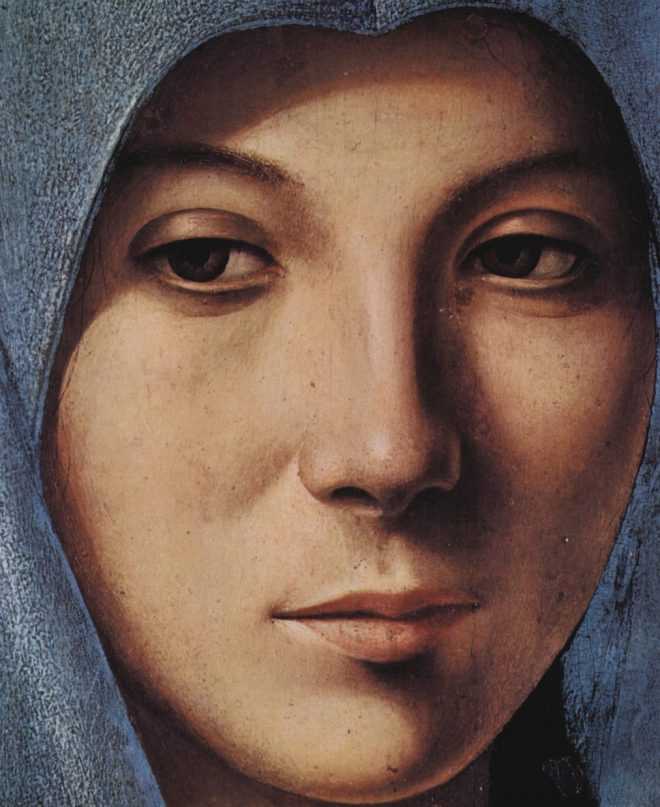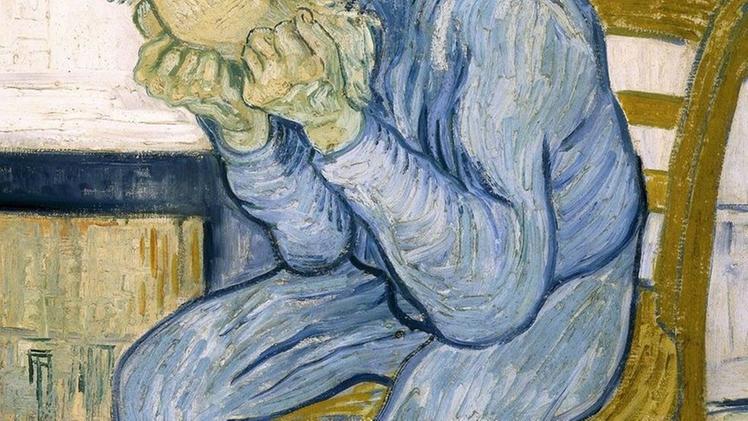A personal selection of historical and contemporary classics
Reading is never a “duty.” This article is not meant to question the
literary sophistication of the reader, nor is it a test to challenge
you, like “let’s see if my favorite books are there” or “let’s see how
many I miss.”
It is rather a prompt, a suggestion of books that we (the
Family and Media
team) have read and that we offer you with a brief justification as to
why we consider worth reading them, leaving it up to you to decide,
dear reader.
Don’t feel obliged to read any or all of them, or even to finish them,
if, after going through the text, you don’t feel like finishing it.
A good book is a gift and reading it is always a free act. When you
receive something as a gift you can only give thanks.
In this first proposal we include mainly novels and some books of
thought. The order is purely random; it has no hierarchical or temporal
criteria. In our opinion these are timeless books, so the year of
publication should be irrelevant; however, we have indicated in
parentheses the first edition year for the sake of completeness.
Novels
Heart of Darkness
, Joseph Conrad (1899)
It is a great classic of English literature, set in the nineteenth century.
The protagonist, sailor Marlow, tells the story of his adventure on the
Congo River during a trip on behalf of a Belgian company involved in the
ivory trade.
The book offers us a journey in every sense: of the protagonist who makes a
long journey through the heart of Africa, but also a journey we must make
through the winding paths of the human heart.
With this work, Conrad denounces racism and colonialism; it helps us to
unmask the much hypocrisy of those who feel superior to others. And he
teaches us that what really makes man “savage” is hatred.
Le petit prince
, Antoine de Saint-Exupéry (1943)
It is a story of an aviator who crashed his plane in the Sahara desert
and runs out of water and food. In this critical situation, a child
approaches him, a little prince who comes from a distant planet… an
encounter that will impact the life of the protagonists and the history
of literature, because this work is one of the most read and
appreciated in the world.
The book is an ode to friendship and generosity, a timeless book, often
recommended to children, even if, in reality, it “has no age limit,”
because in every phase of life it has something to teach or remind us.
Indeed, the older you are, the more you need – perhaps – to recover
one’s own childish innocence…
The Lord of the Rings,
J. R. R. Tolkien (1954-1955)
A classic of the fantasy genre, and yet an extremely realistic story, that
unveils in an absolute original way the struggle between good and evil. The
hero is Frodo, called upon to destroy a ring that enslaves whoever wears
it. Frodo can only succeed in the feat – overcoming his enemies and his
temptations – by being humble, recognizing his own need of others. A work
full of allegories and symbols, it helps the reader to read inside, to
discover the immense value of friendship, to walk together sharing a common
goal… A book that reveals how to serve others is the greatest
revolutionary act we can perform in life.
Survival in Auschwtiz,
Primo Levi (1945-1947)
The book delves into the author’s engaging testimony about what he
experienced in the Auschwitz concentration camp. It is a work that deserves
to be known, not only because it is powerful account of the horror of the
Holocaust, but also because we can meditate personally on how hatred – in
every generation, in every form, in every culture – brings only degradation
and emptiness, unlike love, which builds, which makes things to bloom, even
where it seems there is nothingness, like in an extermination camp.
The Death of Ivan Ilyich,
Leo Tolstoy (1886)
The book tells the story of Ivan, a man who spent his entire life in search
of success and external recognition: his only goal was to “climb the social
ladder” – to be among those who “counted” – to matter, too. When he is on
the brink of death, he reaps what he has sown: indifference, opportunism,
lack of love. A book that, in its sadness, can have a cathartic meaning,
making us ask questions: what relationship do we have with others? Do we
know gratuity or do we use others to prop ourselves up? A book that unmasks
our hypocrisies and shows how much wealth is useless if we have not built
solid relationships.
Pride and Prejudice,
Jane Austen (1813)
It may seem easy and logical to love those who are lovable, but what if
true love requires a paradigm shift, that is to love to make them lovable?
This seems to be the treasure hidden in the British writer’s timeless
novel.
The love story between Elizabeth and Darcy reveals to us that pride,
enclosing us within ourselves is often armor, a shield so as not to show
our vulnerability. It is the love, the patience, the sweetness we receive
that allows us to lower our guard. Pride and Prejudice is surely
one of the books most reread by its fans and with more film adaptations or
films freely inspired by Jane Austen’s masterpiece. It has also inspired
recent novels that have become internationally successful, such as Natalia
Sanmartín Fenollera’s The Awakening of Miss Prim.
The Betrothed,
Alessandro Manzoni (1823)
This universal Italian novel is set in 17th century. Renzo and Lucia are
two good people, with firm values, despite their simplicity. They want to
get married and have a family, but a Spanish nobleman, Don Rodrigo, decides
to hinder the wedding because he takes a fancy to the girl. The story,
which reflects the profound Christian vision of its author, who had become
a fervent Catholic while keeping his nineteen century liberal views, shows
how, in humility and smallness, God’s Providence abounds and that
everything contributes to the good for those who sincerely love him.
This book is always relevant because it cries out firmly against bullying,
injustice, and hypocrisy. And because it reminds us what is, instead, the
narrow path to live in true love.
Anna Karenina,
Leo Tolstoy (1877)
This is a great novel that masterfully reveals the complexity of the human
soul. An everlasting book that scrutinizes not only the hearts of the
characters it presents, but also of those who read it.
The book highlights the differences that emerge between a purely carnal and
therefore destructive “love” – that between Anna and Vronsky – and a love
marked by tenderness and a far reaching project of life, warmed and
protected in the hearth of domestic life – that between Levin and Kitty –
destined to mature over time and bear fruit.
The timeless work of the Russian writer has something to teach even to
today’s generations, showing how true love grows in minor and major moments
and trials within the family.
Follow Your Heart
, Susanna Tamaro (1994)
The novel, which was an acclaimed international best seller in the 90s, is
a sort of testament. Olga, an elderly woman now dying, writes a long letter
to her niece, Marta, who had come to live with her after her mother’s
death. The book shows the sufferings of a lifetime and shows how, behind
the harshness or coldness that characterize some relationships, there is
often hidden only a great lack of love. This “testament” has a cathartic
meaning for the woman and for those who, like her, carry pain in their
hearts; and it is meant to be a lesson for Marta, as well as for the young
people who now enter adulthood.
The Chronicles of Narnia,
C. S Lewis (1950-1956)
This saga shows how true friendship, the one capable of sacrifice, of
giving, of forgiveness, really exists. It is a fantasy book that skillfully
presents the struggle between good and evil.
The protagonists are four brothers who, while in the house of one of their
relatives, hiding from the bombings of World War II, find themselves in
another world, just by passing through a closet. They will have a mission:
to bring the sun back to the icy land of Narnia, which has been taken over
by the power of the cruel White Witch. Then they must lead that kingdom in
a new direction…
Animal Farm,
George Orwell (1945)
It is an allegorical tale. The background is that of a fairy tale of
animals organizing an egalitarian farm after having driven out their
masters, but it reflects sharply on the events that led to the Russian
Revolution and later to the Stalinist era of the Soviet Union. The fable,
conceived as a critique of Soviet totalitarianism, has become a universal
critique of every utopian endeavor that erases freedom in the name of
alleged justice, and reveals how the lust for power ends up corrupting
ideals and bringing out the ugly human tendency to suppress others.
My name is Asher Lev
, Chaim Potok (1972)
A tale about the discovery of an extraordinary talent and the difficult
resolution to correspond to a vocation. A novel of formation that tells of
a young American living in the community of Orthodox Jews who was born with
a passion and gift for drawing and painting. His vocation as an artist,
threatened by belonging to a family of devoted Jews, is nevertheless
encouraged by his mother who asks him to draw “graceful things.” Thus,
Asher Lev begins to paint beauty to overcome the suffering that afflicts
his mother, his family, and his own restlessness. Until he arrives at his
most demanding painting, for which he will use the cross as a model,
indicating both suffering and redemption.
The Kite Runner,
Khaled Hosseini (2003)
Being friends carries responsibilities: one of them is to take the other’s
side when he is offended or mistreated. But what if you don’t have the
courage to do that? What if fear overcomes the good that must be done?
That’s what happens in this story, when the protagonists, Amir and Hassan,
are still young children. They live in Afghanistan and are inseparable
until something awful will divide them… but their paths will cross again.
This book, decidedly raw, shows the darkness of evil. It shows that one can
be so degraded as to make helpless children suffer. But the author shows us
too that there is also the freedom to do the right thing, in spite of the
evil suffered; he shows us the strength to get back up and make up for
mistakes made in the past.
White as Silence, Red as Song,
Alessandro D’Avenia (2010)
Leo is a very sensitive and good kid, even though he goes through the
rebellious phase typical of adolescence. In his seemingly normal life, made
up of school, friends, and squabbles with his parents, a deep pain shakes
him: Beatrice, the girl with whom he has fallen in love, has a crush on,
falls ill with leukemia.
The novel is quite suitable for teenagers because it highlights the growth
of the protagonist, who discovers through the events that follow, the
beauty of being at the service of others. He also understands that love is
not a blind passion, that it comes down on us like a storm, but rather has
the sweet aspect of a quiet sea…
Little Women,
Louisa May Alcott, (1868-1869)
Meg, Jo, Beth, and Amy are four sisters, all very different from one
another, who have to deal with each other’s personalities and the
transition from childhood to adulthood, accompanied by the wisdom of their
mother while her father is at the front during the American Civil War. G.
K. Chesterton, a famous English writer of the early 20th century, greatly
appreciated this novel. Although the title might discourage the male
audience from picking it up, and in fact many have walked away before
opening it, its reading is like “entering a girl’s club as a fly on the
wall” through the eyes of the young man next door, it is like entering into
an infinite world. More than a story of the past, it is a timeless story;
where authentic values and feelings will always have something to say to
the new generations, and something to make the older ones think about.
The Garden of the Finzi-Continis,
Giorgio Bassani (1962)
The Garden of the Finzi-Continis was one of the first Italian novels to
talk about the Racial Laws of 1938 and the deportation of Jews, and it was
a great success.
The novel narrates the love, friendship, life plans, and tennis matches of
some Jewish boys from Ferrara who were perfectly integrated in the life of
the city during their university years, while Italy allied itself with
Germany and entered the war… the dramatic events will also involve the
lives of our characters, but will not affect the bond born in the gardens
that saw them grow up together…
T
he Complete Robot,
Isaac Asimov,
(1982)
The robot is the perfect machine and a reproduction of man himself, which,
for this very reason, is somehow used by the author to reveal his secrets,
his most characteristic features. Science fiction atmospheres are thus able
to investigate the human beyond all realism. In the background, we see the
enduring issue of the machine-person dialectics, and, at the same time, of
the robot-human coexistence. A useful reading to reflect on what is human
precisely through something artificial.
Thought
On the Problem of Empathy,
Edith Stein (1917)
The text represents the doctoral thesis of a very young Edith Stein, a
student of philosophy, a Jewish convert to Christianity, who later became
Saint Teresa Benedicta of the Cross, patroness of Europe and martyr of
Nazism. The theme addressed is always topical: how can one approach the
conscience of others, succeeding in breaking the wall of incommunicability
to overcome loneliness and establish an authentic dialogue with the other?
Edith Stein highlights the importance of self-recognition through the
other. An analysis of empathy, accurate and attentive to the value of the
subject, an extraordinary feat, especially if we consider that she herself,
deported and killed in a concentration camp, has experienced first-hand the
denial of the recognition of her dignity.
The Confessions,
Saint Augustine (398)
A book that we recommend because the risk of getting lost in search of
oneself is always just around the corner: reading the spiritual journey of
one of history’s greatest thinkers – as well as a father of the Church –
can be of great help in understanding how to give value to our life, how to
find fullness, whatever our condition.
Augustine, with his thirst for truth, with his desire to grow in love, can
be an inspiration to anyone who recognizes himself “on the path.”
Jesus of Nazareth,
Joseph Ratzinger – Pope Benedict XVI (2007)
Can one still today write a biography on Jesus Christ after twenty
centuries of Christianity crossed by interpretations of his identity, after
so many doubts and struggles against what he represents and has generated?
Can we really know what consciousness Jesus of Nazareth had about himself?
Ratzinger-Benedict XVI is following a path that, even beyond the
theological interest, is of extraordinary use in asking the question of who
Jesus Christ is and why this is relevant to any man of any generation. It
is a historical-critical biography on Jesus of Nazareth read with the eyes
of faith, which puts to the test the consistency of it to those who have
faith, and does not leave indifferent those who do not have it.
The Art of Beginning Again,
don Fabio Rosini (2020)
Someone has defined it as an “interactive” book, because whoever reads it
is not only called to internalize its content, but also to do real work in
his own life. A book to ask oneself about one’s wounds, the direction to
take, the obstacles to overcome, the wounds to heal, to be “free,” free to
start again.
A very profound and charismatic Roman priest, Rosini undoubtedly leaves his
mark on those who listen to him… and those who read him.
Where There Is Love, There Is God,
Brian Kolodiejchuk (2010)
An essay on spirituality, it reports thoughts, poems, and anecdotes about
the life of Mother Teresa of Calcutta. The saint, loved by many for her
goodness towards the weak and suffering, for her courage, her trust in
Providence, speaks in a simple way, is concrete and often strikes even
those who do not believe. A book to try, to meditate on, to let in, to get
to know a little better one of the most fascinating figures of the 20th
century. “The sin is not knowing how to love,” Mother Teresa said. And this
text could really help us understand what this concretely means.















